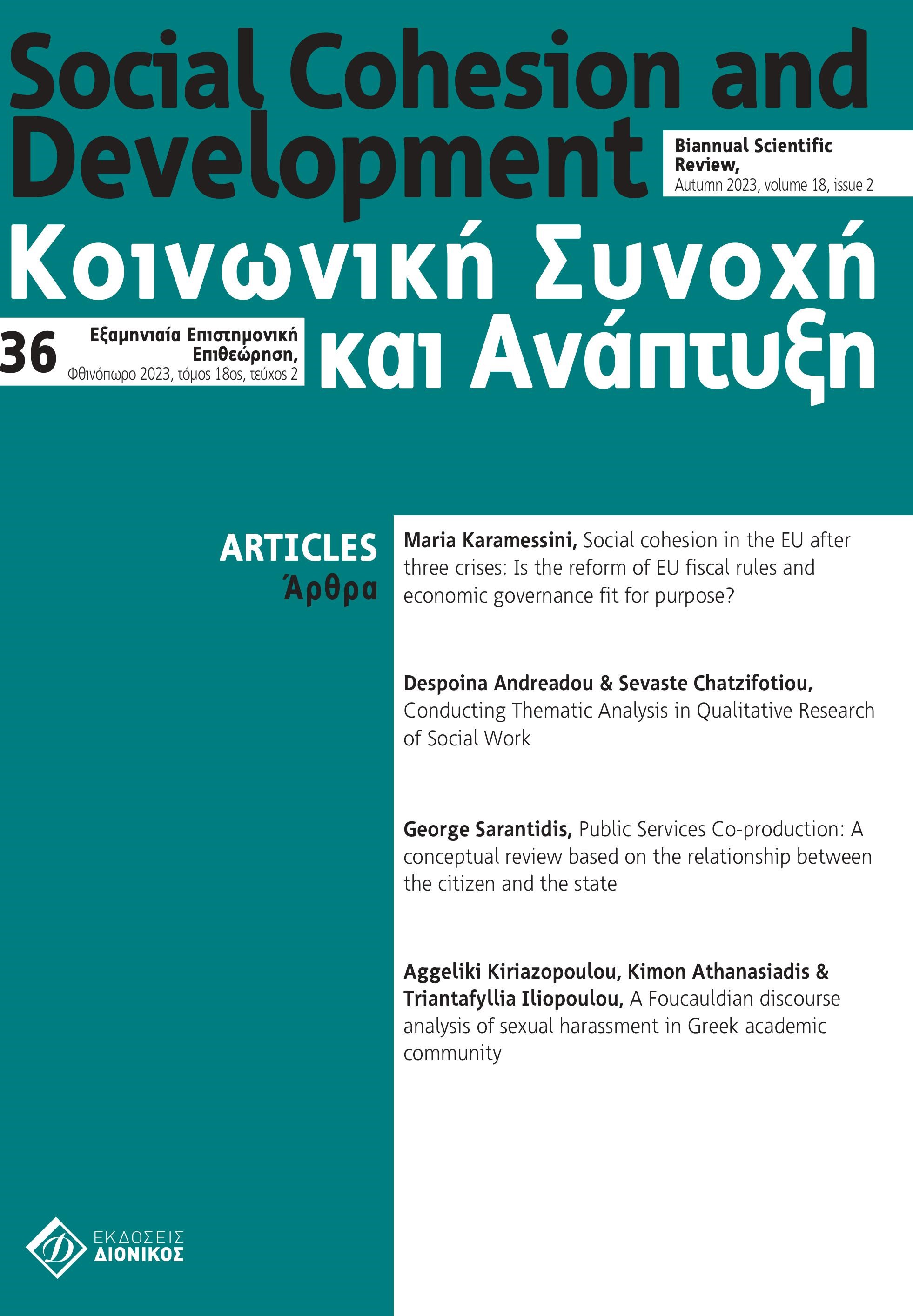A Foucauldian discourse analysis of sexual harassment in Greek academic community

Abstract
This research investigates the views and perspectives of Greek undergraduate students upon sexual harassment in academic community. The sample was 6 students and the dat were analysed with the use of the Foucauldian Discourse Analysis. Four main themes emerged from the analysis: The “gen-der blind” vulnerability discourse, the power as a driving force,
patriarchy as a developmental factor for the male perpetrator and power relations in the academic community. Patriarchy constitutes a developmental factor for the male perpetrator thus moralising practices and behaviours that develop fear and a culture of silence. Regarding the academic community, power relations are built on the concepts of prestige, profit and on the high ranking position thus interpreting power relations as gender relations.
Article Details
- How to Cite
-
Kiriazopoulou , A., Athanasiadis , K., & Iliopoulou , T. (2023). A Foucauldian discourse analysis of sexual harassment in Greek academic community. Social Cohesion and Development, 18(2), 151–162. https://doi.org/10.12681/scad.37480
- Section
- Articles

This work is licensed under a Creative Commons Attribution-NonCommercial-ShareAlike 4.0 International License.
Authors who publish with this journal agree to the following terms:
- Authors retain copyright and grant the journal right of first publication with the work simultaneously licensed under a Creative Commons Attribution Non-Commercial License that allows others to share the work with an acknowledgement of the work's authorship and initial publication in this journal.
- Authors are able to enter into separate, additional contractual arrangements for the non-exclusive distribution of the journal's published version of the work (e.g. post it to an institutional repository or publish it in a book), with an acknowledgement of its initial publication in this journal.
- Authors are permitted and encouraged to post their work online (preferably in institutional repositories or on their website) prior to and during the submission process, as it can lead to productive exchanges, as well as earlier and greater citation of published work (See The Effect of Open Access).


